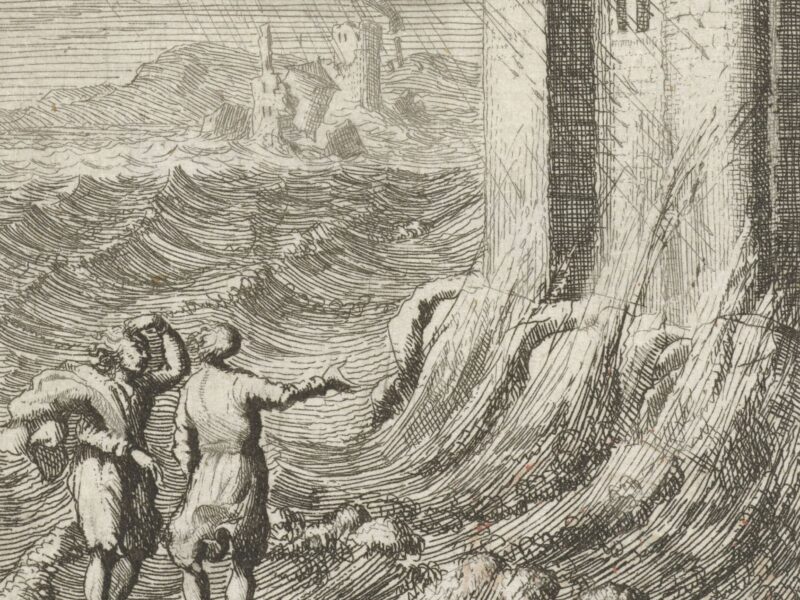
Visit to Gloucester Blackfriars
News | Last week a group of friars were very warmly welcomed to Gloucester to visit the medieval Dominican priory, the most complete that has survived from the Middle Ages in England. We enjoyed the immense hospitality of the local community, and the visit even managed to prompt some media interest from the BBC and ITV.
 Gloucester Blackfriars is the most complete Dominican priory that has survived from the Middle Ages. It was established around 1239, not long after the friars first arrived in England. And in the year we celebrate that arrival in 1221, our 800th Jubilee, a group of five friars from Oxford were very warmly welcomed for a visit to reconnect with the life of our medieval forebears.
Gloucester Blackfriars is the most complete Dominican priory that has survived from the Middle Ages. It was established around 1239, not long after the friars first arrived in England. And in the year we celebrate that arrival in 1221, our 800th Jubilee, a group of five friars from Oxford were very warmly welcomed for a visit to reconnect with the life of our medieval forebears.
The day had begun early with a short slot on BBC radio Gloucester, in which Br John and one of our hosts Councillor Collette Finnegan, Mayor of Gloucester, briefly spoke about the plan for the day and its significance for the friars.
On arrival in Gloucester we were greeted by Councillor Finnegan and the Sheriff, Councillor Clive Walford. Before our tour began, ITV News arrived to film a short segment for the evening news, in which Br Bede and Br John shared their first impressions of the magnificent priory.
The filming:
The result:
Then we had the great privilege of being shown round the site by Phil Moss, a local historian and expert guide to Gloucester Blackfriars, who brought to life its many details and intricacies.

The priory itself, begun by 1241 at the instigation of the lead benefactor Stephen de Herneshall, was complete by around 1270, a home for 40 friars. It was situated on land that had originally formed part of the outer bailey of the castle. King Henry III, whose confessor was a Dominican, was among the generous benefactors, supplying a significant quantity of wood from the royal forests. The roof of the church, as well as of the ‘scriptorium’ depicted further below, was constructed from that same wood in a magnificent scissor-brace structure that has survived intact to this day.

The condition of the priory today is largely due to Thomas Bell, a local alderman and later Mayor of Gloucester, who bought the site after the Dissolution of the Monasteries in 1539. He converted the buildings into a weaving factory, and the church into his mansion. Consequently the church, occupying the north range, is somewhat truncated from its original length, but the impression of its height and extent remain. The large nave was where the local people would have gathered to hear the friars preaching.

For three centuries up until its dissolution the priory and its preaching mission had been central to the life of Gloucester, sustained by the immense generosity of benefactors. The relationship with the city was evidently not always straightforward, and the depth of feeling is nicely demonstrated by the reaction of the locals to a certain prior’s attempt to punish a renegade friar and popular preacher, William Hasfield: the priory was besieged by crowds who objected to Hasfield’s treatment.

Perhaps the most impressive and intact part of the priory that remains today is the ‘scriptorium’, an upper-floor room on the south range thought to be a library or scriptorium where the friars would study. It has retained twenty-nine of its original study carrels, a unique survival. Some have suggested that perhaps the room was instead a dormitory, as there is evidence that wooden panels once extended from these cubicles to enclose a larger cell.


The small windows look out onto the cloister, and one of them contains evidence that even medieval friars tend to doodle when distracted at their desks.

Following this wonderful tour, we made our way across the city and the Gloucester docks to visit Llanthony Secunda, a medieval Augustinian priory.

There we were met by Stephanie van Stockholm, who treated us to another expert guided walk around the site, narrating the fascinating history of this priory from its origins in the Welsh mountains to a vast medieval complex with land in surrounding counties and as far as Ireland. The few remaining buildings have recently been transformed from a derelict site into a beautifully cared for visitor centre.


All the friars express their immense gratitude to those who invited us and made the day possible, especially the Mayor Councillor Collette Finnegan, Mhairi Smith from the City Council, and our guides Phil Moss and Stephanie van Stockholm. Our thanks also go to Paul James, a former councillor of the city who initially made contact and is writing a book on the city’s regeneration over the last 20 years.
Photos taken by Francesco Lorenzon OP.



A Website Visitor
Charles Cassini
Looking back historically, this is a sad comment on religious events in England from the 16th century to the present. Looking forward, it can be taken as a harbinger of a residue still existing in England that has led to the formation of an Anglican Dominican religious order that may be another step in the eventual reunification of Catholicism with the Church of England.